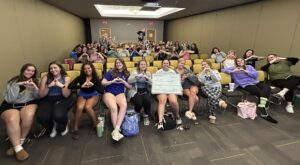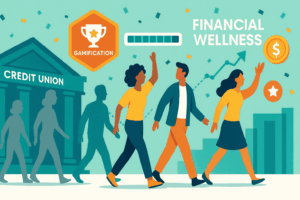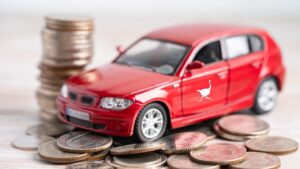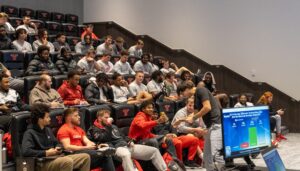Quinn Ewers, a quarterback from Southlake, Texas, was considered the best collegiate football prospect for the class of 2022. After receiving a $1.4 million dollar NIL deal he left high school a year early enrolling at Ohio State in 2021. Quinn transferred to Texas at the end of the 2021 season. Let’s break down the numbers of how Quinn could spend that money.
How Much Quinn Ewers Pays in Taxes
The first thing to plan for when landing a big deal is making sure you cover your tax liability. Luckily for Quinn he lives in the state of Texas which has no state income tax, meaning he’ll only have to pay federal taxes.
We are unsure of the exact details of the deal. We’ll assume he received all of the money upfront in one year.
He’ll pay $482,072 in federal income tax which leaves him with $917,928.
What Quinn Ewers Could Buy
Using that after-tax money Quinn can afford to purchase many things, including season tickets for 2,384 of his closest friends to watch every game he plays for a year at the University of Texas. He could cover the tuition, room and board, and other expenses of 28 UT students! He could buy 83,488 footballs, 178,238 McDonald’s Big Macs, 771,368 Tacos from Taco Bell, or 27,170,669 water balloons.
What Quinn Ewers Can Invest In
With the after-tax money of $917,928, Quinn could choose to invest the money using some tried and true practices. Let’s take a look at some of those options.
The 4% Rule
The 4% rule is used to help you determine how much income you’ll have in retirement. We take Quinn’s after tax money of $917,928 and we simply multiply it by 4%. This gives us the annual salary that Quinn would receive if he retired today and never made another dime.
Which for Quinn results in an income of $36,717 a year if he chose to retire now. Not bad for a college quarterback who has only played two downs at this point in his career.
How does the 4% rule work exactly?
The 4% rule has its origins in the idea that you can achieve 8% returns over the long run by investing in a diverse stock market portfolio. This doesn’t have to be a complex portfolio, and may be made up of just a few low cost ETFs, such as VOO that we discuss below. In the first year of your retirement, you would withdraw 4% of your portfolio to live on. In future years, you adjust that withdrawal amount by the inflation rate. You can read more about the 4% rule in this excellent Forbes article written by Rob Berger.
Investing in the S&P 500
Another option for Quinn is to invest in a low cost index fund that tracks the S&P 500. The reason why this is a popular strategy is that since its inception the S&P 500 has returned an average of 10% historically. A low-cost index fund means you can buy all of the companies in the S&P 500 with one stock purchase. You’ll own a tiny bit of each company. Our founders are big fans of Vanguard’s S&P 500 index fund that trades under the stock ticker: VOO.
If Quinn put that $917,928 in the S&P 500 with dividend reinvesting on, in 25 years his money would be worth $10,845,523 based on historical returns.
Purchasing a Rental Property
A third option for Quinn is to purchase investment property. There are many benefits to owning rental property, from regular cash flow to beneficial tax treatment and more. A popular way to purchase real estate is to get bank financing. This allows the buyer to purchase a larger property. Let’s assume Quinn pays cash and puts all of the $917,928 into a property with a 10% cap rate.
In that scenario, Quinn Ewers would cash flow $91,793 a year after expenses.
How does a cap rate work exactly?
A 10% capitalization rate is calculated by taking the net operating income (total income minus expenses) and dividing that by the purchase price of the property. The cap rate allows you to measure the return and risk across different types of real estate investments.
What Should Quinn Ewers Do?
Our hope is that Quinn will adopt one or multiple of these investment strategies while he’s young in order to set himself up for long-term success. While we don’t know what Quinn will do, you can start to adopt these strategies yourself.
Download Ostrich to get your financial health score, see how you compare to your peers, and start building your nest egg. It’s never too early (or too late)!














